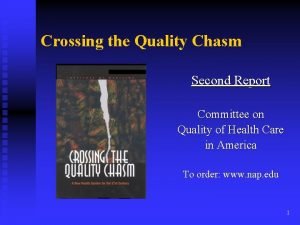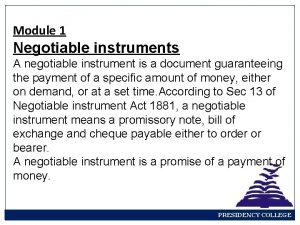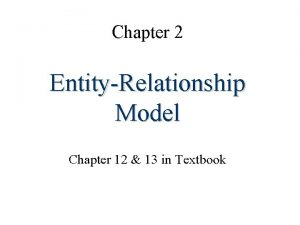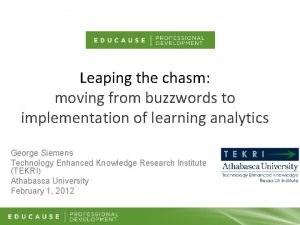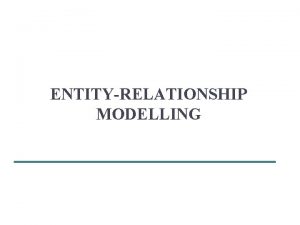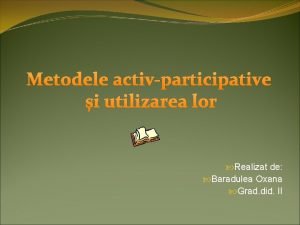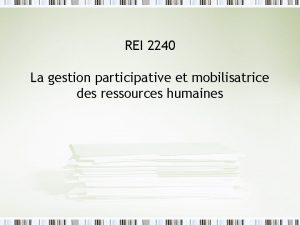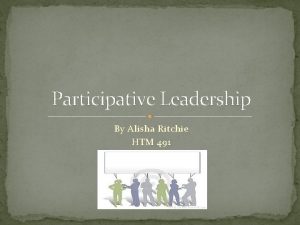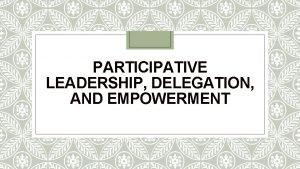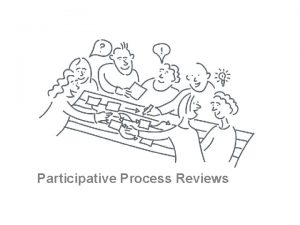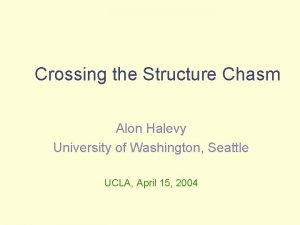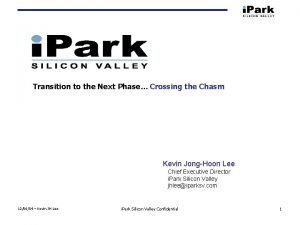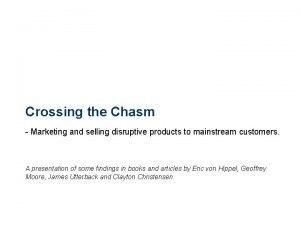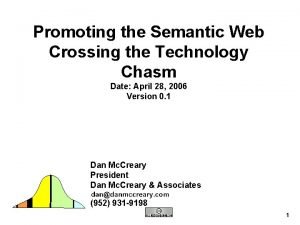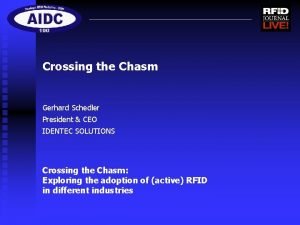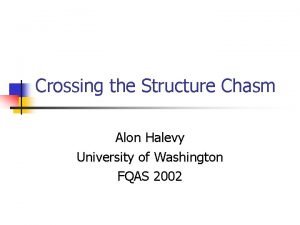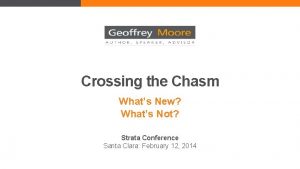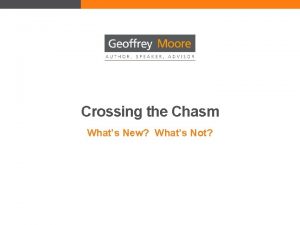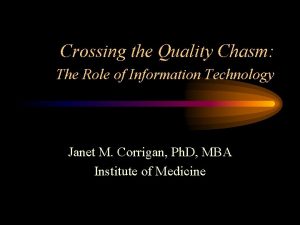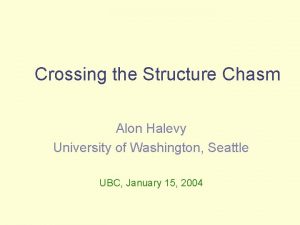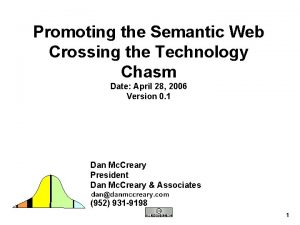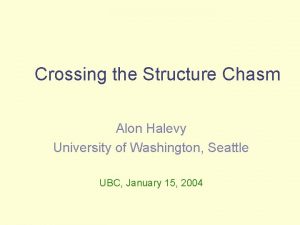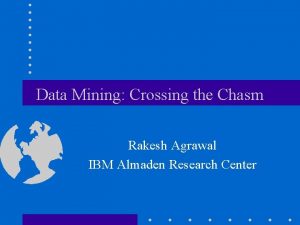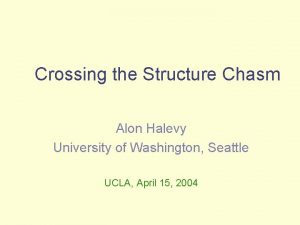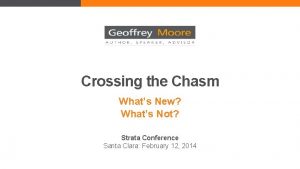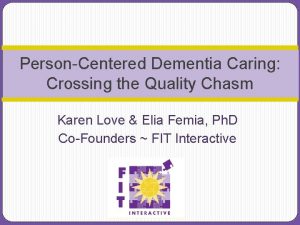Crossing the Chasm A Participative Approach to Developing






















- Slides: 22

Crossing the Chasm: A Participative Approach to Developing a Framework for Scaling OER Adoption Alma Correa, Researcher, Institutional Research Kats Gustafson, Dean, Online & Distributed Learning Matthew Rivaldi, Faculty, Business Information Technology Stephanie Bulger, Vice Chancellor, Instructional Services ELI Annual Meeting January 30, 2018 New Orleans, LA

Open Educational Resources Adoption Open Educational Resources are: “Teaching, learning, and research resources released under an intellectual property license or public domain which permits their free use and re-purposing by others. ” --William and Flora Hewlett Foundation

Diffusion of Innovation The Chasm Rogers, E. M. (2003). Diffusion of Innovations (5 th ed). New York, NY: Free Press. Image by Matthew Rivaldi and is licensed: CC By

Diffusion of Innovation Early Adopters seek a “Change Agent. ” They expect a radical discontinuity between the old ways and the new and are prepared to champion this cause against expected resistance. Rogers, E. M. (2003). Diffusion of Innovations (5 th ed). New York, NY: Free Press. Image by Matthew Rivaldi and is licensed: CC By

Diffusion of Innovation In contrast, the Early Majority want productivity improvement. They are seeking to minimize discontinuity. They seek evolution rather than a revolution. Rogers, E. M. (2003). Diffusion of Innovations (5 th ed). New York, NY: Free Press. Image by Matthew Rivaldi and is licensed: CC By

Diffusion of Innovation The Chasm Rogers, E. M. (2003). Diffusion of Innovations (5 th ed). New York, NY: Free Press. Chart Image by Matthew Rivaldi and is licensed: CC By. Motorcycle Image CC 0. Source

Image CC 0. Source

Image from Pexels. com CC 0. Source

Standard QWERTY Keyboard DVORAK Keyboard Top Image by Matthew Rivaldi and is licensed: CC By. Bottom Image. Licensed CC 0. Source: https: //upload. wikimedia. org/wikipedia/commons/2/25/KB_United_States_Dvorak. svg

The Process for Diffusion of Innovation: Five Stages in the Decision Innovation Process 1 Knowledge 2 Persuasion 3 Decision 4 Implementation 5 Confirmation Image from Pexels. com. CC 0. Source Rogers, E. M. (2003). Diffusion of Innovations (5 th ed). New York, NY: Free Press.

Assumptions: • Focusing on moving the “Early Majority” to OER adoption. • There is agreement of the five stages in the decision innovation process. Objectives for today: • Understand practice developing an OER framework for moving the “Early Majority” through the Decision Innovation Process. • Develop a custom framework to scale OER adoption for a higher education institution. The tangible product will help SDCCD “cross the chasm” and be accessible to other institutions to use or modify for their institution.

The Process for Diffusion of Innovation: Five Stages in the Decision Innovation Process 1 Knowledge Would-be adopter is first exposed to innovation and seeks further information regarding OER 2 Persuasion Conveying the benefits of adoption of OER 3 Decision Weigh pros and cons of adoption Rogers, E. M. (2003). Diffusion of Innovations (5 th ed). New York, NY: Free Press. 4 Implementation Finding if OER is really useful or not 5 Confirmation Determine the scale and scope of the adoption of OER within the institution. Specify resources.

Crossing the Chasm focusing on Early Majority can be considered pragmatists: ● Although harder to win over, the Early Majority are often loyal once won. ● Tend to be “vertically” oriented and communicate more within their own industry or community. ● Prefer to keep communication to a minimum number of channels. ● Want to wait until the product is proven. ● They often don’t want to hear about the “latest and greatest, ” they just want to know it works. They’d rather hear “industry standard” rather than “state-of-the-art. ” Bringing on the Early Majority takes patience. . . and time. It can be a long-term agenda. Rogers, E. M. (2003). Diffusion of Innovations (5 th ed). New York, NY: Free Press. Chart Image by Matthew Rivaldi and is licensed: CC By.

Prompts for each stage have been provided in your handouts STAGES: COMPONENTS: 1 KNOWLEDGE WHO… move to the next stage? What are the main incentives for the Early Majority to enter and pass each stage of the Decision Innovation Process? What might interest Now that the Early Majority are knowledgeable about to become OER, how do we get the knowledgeable early majority open to the about Scaling OER idea of adopting OER? Adoption? What benefits and how At this point, the should we convey group may not be information that would aware of OER, how convince the Early Majority can we get this that implementing OER group’s attention? might be a good decision? WHAT… will we know we are successful? WHEN… is this stage complete? 4 IMPLEMENTATION 5 CONFIRMATION. What does the process of decision making look like at your institution? Is the decision made as a group or individually? When the Early Majority decides to use OER, how can we support their decision and make it a positive experience? Can we assist in users performing an individual or classroom evaluation of the experience using OER? How can we increase the How can we increase of access to support, access to group information and the confirmation during this This process is not stage when seeking suggested to be a forced quality of OER within the process, but rather institution while the group confirmation from intrinsically motivated. goes through the peers, colleagues, implementation stage? friends, etc. ? Specific tactics to employ to move the Early Majority to the next stage. Actions help focus resources that will be needed to move successfully to the next stage. actions will we take? HOW… 3 DECISION Individuals or groups who help move the Early Majority to the next stage. Stakeholders may or may not include the Early Majority. are the important stakeholders? WHY… 2 PERSUASION Increase awareness of OER by providing education and professional development to move to stage 2. Convey the benefits of OER in detail. Provide stakeholders ease Evaluate effectiveness Weigh the pros and cons of access and quality and benefits of adopting of adoption to accept or information and resources OER for students, reject the opportunity. to implement OER. faculty and institutional. How long (or by what date) would we like the stage to be completed to move the Early Majority past this stage? The timing of each stage will likely be unique to each institution and social system.

Factors to consider when creating a framework ● ● ● ● Influences Facilitation Impediments Channels of Communication Impact of Time Rewards to Complete the Stage Measurement ● Additional Considerations? Has anything been missed at each stage of the framework? Rogers, E. M. (2003). Diffusion of Innovations (5 th ed). New York, NY: Free Press.

Group Activity: Each group records components of one of five stages STAGES: COMPONENTS: WHO… are the important stakeholders? WHY… move to the next stage? WHAT… actions will we take? HOW… will we know we are successful? WHEN… is this stage complete? 1 KNOWLEDGE 2 PERSUASION 3 DECISION 4 IMPLEMENTATION 5 CONFIRMATION.

Group Activity: Each group records components of one of five stages STAGES: COMPONENTS: 1 KNOWLEDGE 2 PERSUASION 3 DECISION 4 IMPLEMENTATION 5 CONFIRMATION. WHO… are the important stakeholders? WHY… move to the next stage? HOW… will we know we are successful? Increased awareness. Professional development was offered. Conveyed benefits in detail. Early Majority is open to adopt OER. We have started on the framework by completing ents. n o p m o c N E H W d n a W O H can be tsout. nensent compo. Survey eseto implement. Early Majority weighed. Th Rewards pro’s and con’s. Early Majority s willtitution. in r u o y r fo d e iz m Majority decided tocusimplemented OER at continue to offer to adopt OER. institution. OER. WHEN… is this stage complete? TBD. Unique to each institution and social system. WHAT… actions will we take?

Group Activity: Each group records components of one of five stages STAGES: COMPONENTS: 1 KNOWLEDGE WHO… are the important stakeholders? We have organized attendees into groups based on table location. Each group will complete one of the stages. WHY… move to the next stage? WHAT… actions will we take? HOW… will we know we are successful? Increased awareness. Professional development was offered. WHEN… is this stage complete? TBD. Unique to each institution and social system. Before that step. . .

Group Activity: Each group records components of one of five stages STAGES: COMPONENTS: 1 KNOWLEDGE 2 PERSUASION 3 DECISION 4 IMPLEMENTATION 5 CONFIRMATION. WHO… are the important stakeholders? WHY… move to the next stage? WHAT… actions will we take? HOW… will we know we are successful? Increased awareness. Professional development was offered. Conveyed benefits in detail. Early Majority is open to adopt OER. WHEN… is this stage complete? TBD. Unique to each institution and social system. we As a collective group, can re identify stakeholders that a tages? fivesentsout. n in all. Survey mmtooimplement. Early Majority weighedco Rewards pro’s and con’s. Early Majority decided to adopt OER. Early Majority implemented OER at institution. Early Majority will continue to offer OER. TBD. Unique to each institution and social system.

Group Activity: Each group records components of one of five stages STAGES: COMPONENTS: 1 KNOWLEDGE WHO… Academic Senate are the important Program Chairs stakeholders? D. E. Dean Board of Trustees VPI, VPA WHY… move to the next stage? WHAT… actions will we take? HOW… will we know we are successful? Increased awareness. Professional development was offered. WHEN… is this stage complete? TBD. Unique to each institution and social system. GROUPS: ● Organize individuals into 5 groups. Each group will take 1 stage. ● Individuals within the group will write their ideas on sticky notes and add to poster boards, focusing specifically on on the WHY and WHAT components. ● Groups will discuss and edit. ● Groups will present out (if time permits).

Thank you for your participation! To receive a copy of the slides, the handouts, and a video of the presentation, please visit the ELI Educause resource page or email mrivaldi@sdccd. edu Please be sure you have entered your email on the sign-in sheet. A copy of the Framework will be emailed to each participant on the sign-in sheet. Alma Correa, acorrea@sdccd. edu Matthew Rivaldi, mrivaldi@sdccd. edu Kats Gustafson, kgustafs@sdccd. edu Stephanie Bulger, sbulger@sdccd. edu

Content License: © 2018, San Diego Community College District and the respective copyright owners. Unless otherwise noted, this work is licensed under a Creative Commons Attribution 4. 0 International License. Retrieved from: https: //docs. google. com/presentation/d/1 Tsuvgx. Kf. FEm. BJPFl. OKW 72 d 6 odj. Fw. R 972 Oyh. Jq 4 m. OZY/edit? usp=sharing
 Control foundation chasm
Control foundation chasm Difference between special crossing and general crossing
Difference between special crossing and general crossing Chasm trap
Chasm trap Chasm trap
Chasm trap Leaping the chasm
Leaping the chasm Chasm trap
Chasm trap Metoda turul galeriei exemple
Metoda turul galeriei exemple Modèle de gestion participative
Modèle de gestion participative Participative leadership definition
Participative leadership definition Leadership delegation
Leadership delegation Packet switching datagram and virtual circuit approach
Packet switching datagram and virtual circuit approach Research approach means
Research approach means Bandura's reciprocal determinism
Bandura's reciprocal determinism Cognitive approach vs behavioral approach
Cognitive approach vs behavioral approach Diagram for traditional approach
Diagram for traditional approach International market selection
International market selection Tony wagner's seven survival skills
Tony wagner's seven survival skills Multiple approach-avoidance conflict
Multiple approach-avoidance conflict Dạng đột biến một nhiễm là
Dạng đột biến một nhiễm là Thế nào là sự mỏi cơ
Thế nào là sự mỏi cơ Phản ứng thế ankan
Phản ứng thế ankan Trời xanh đây là của chúng ta thể thơ
Trời xanh đây là của chúng ta thể thơ Voi kéo gỗ như thế nào
Voi kéo gỗ như thế nào
